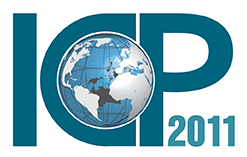Given the complex nature of the ICP and the fact that it has become the largest worldwide statistical operation, the program decided that the December release will be postponed until March 2014, in an effort to produce the utmost quality results. Read more ...
 The preliminary results from the 2011 round of the International Comparison Program (ICP) will be released in December 2013 followed by a more in-depth report in March 2014. The first release will provide Purchasing Power Parities (PPPs), price level indexes, and real expenditures for gross domestic product (GDP) and major aggregates for over 190 countries. Major economic indicators on the global economy produced by the World Bank are based on PPPs which are used to provide internationally comparable price and volume measures for GDP and its expenditure components. The same PPPs are used to determine comparable poverty levels across countries based on the $1.25 per day poverty line.
The preliminary results from the 2011 round of the International Comparison Program (ICP) will be released in December 2013 followed by a more in-depth report in March 2014. The first release will provide Purchasing Power Parities (PPPs), price level indexes, and real expenditures for gross domestic product (GDP) and major aggregates for over 190 countries. Major economic indicators on the global economy produced by the World Bank are based on PPPs which are used to provide internationally comparable price and volume measures for GDP and its expenditure components. The same PPPs are used to determine comparable poverty levels across countries based on the $1.25 per day poverty line.
The final report in 2014 will provide an in-depth analysis of volume and per capita indexes. The ICP is a worldwide statistical initiative now involving over 150 countries and economies (plus 48 in the Eurostat-OECD PPP program) conducted on a six year interval to collect price and expenditure data for the entire range of final goods and services that comprise GDP including consumer goods and services, government services, and capital goods. The 2011 round of the ICP is leveraged on the successful outcome of the 2005 round that included 146 countries. The ICP is the largest and most complex international statistical activity in the world; therefore, several other publications have been or will be prepared to support the findings from the new results. A brief summary of each follows.
The recently published ICP book “Measuring the Real Size of the World Economy-The Framework, Methodology, and Results of the International Comparison Program” edited by the World Bank provides the most comprehensive accounting ever presented of the theory and methods underlying the estimation of PPPs. The ICP faces unique challenges in providing statistical methodology that can be carried out in practice by countries and economies differing in size, culture, statistical capabilities, and the diversity of goods and services available to their population. This book brings together a presentation of the methodology available for international price comparisons, the choices made for the 2005 ICP, the outcome of those choices, and steps taken to improve the quality of the 2011 results. By disclosing the theory, concepts, and methods underlying the estimates, the book increases the transparency of the ICP process and provides a forward-looking view of methodological developments with an eye toward improving the quality of future comparisons. The book’s authors include leading experts in the fields of economics and statistics on international comparisons.
Revisions to the ICP 2005 Benchmark results to be released in December 2013. Comparing results from ICP benchmarks is complicated by three significant factors. First, the ICP is designed to provide a one-time “snapshot” rather than a time series. Second, the collection and estimation methodologies for some components are improved between rounds. Third, additional countries are included plus others shift from one region to another. This affects comparisons between countries because the multilateral results will differ depending on the countries included. In addition, national accounts data in virtually all countries are revised over time as additional data become available. For instance, the 2005 estimates of GDP and its major components have been revised in most countries since the 2005 ICP results were released in December 2007; in the case of 22 countries, these revisions have been in excess of ten percent. Additionally, analogous problems arise with revisions to population estimates. Therefore, the 2005 benchmark results will be recomputed to reflect national accounts data revisions. In addition, a revision policy is being developed to ensure future revisions are applied transparently and consistently. The revision policy recognizes that successive ICP rounds will be treated by many users as a time series even though they are really one-time snapshots. As such, a formal revision policy is necessary to ensure the greatest possible data consistency in successive ICP rounds. Development of the revision policy is underway and will define how data will be revised as future ICP rounds generate new benchmark data.
Revisions to PPP time series for 2006-2011 published in the World Development Indicators data base. Because many data users require PPPs more frequently than every six years, the World Bank’s World Development Indicator data base provides annual PPPs obtained by extrapolating benchmark results using relative growth rates between each country and the U.S. The World Bank is working on methods to improve the extrapolation methods in order to make these results more comparable with subsequent benchmark data and consistent with the revision policy described above.
Assessment of changes in benchmark survey methodology. The ICP has a rich history beginning in 1968. Each successive round brought new and improved methodologies regarding the theory and application of price indexes. Using lessons learned from extensive analysis of the 2005 ICP results, new methods have been developed for the estimation of PPPs based on a global currency. PPPs are first computed within each of six regions and are based on prices of products commonly consumed within each region. While this method provides PPPs between countries within regions, the challenge remains to then link all regions to a common global currency. The most significant change from the 2005 benchmark was the development of a global core list of consumer products for ICP 2011. Each country priced products from the core list available to its consumers in addition to prices from its list of regional products. The within region PPPs will be converted to the global currency using PPPs based on the core product prices In addition, improvements have been made to methods used for difficult to compare components of GDP including housing rents, government compensation, health and education, and capital formation. A dilemma is that the new and improved methods affect the comparability of results between benchmarks. Therefore, an analysis describing each change in methodology and its impact on the comparability of the 2005 and 2011 results will be released in conjunction with the December release of preliminary results.
Data Access Policy. The data underlying the estimation of PPPs and real expenditures includes unpublished results for 155 basic headings and national annual average prices for thousands of products. Much of the analysis shown in the “Measuring the Real Size of the World Economy” leading to new and improved methods for the 2011 round came from the authors having access to a data file from ICP 2005 containing basic heading PPPs and expenditures for the 146 participating countries. The data access policy for ICP 2011 was expanded to include access to national annual prices where national confidentiality constraints allow. Details about the data access policy are available by visiting
http://siteresources.worldbank.org/ICPINT/Resources/270056-1255977254560/121120_ICPDataAccessPrinciples&Procedures.pdf
Related link: Measuring the Real Size of the World Economy-The Framework, Methodology, and Results of the International Comparison Program (PDF | Buy)



Join the Conversation